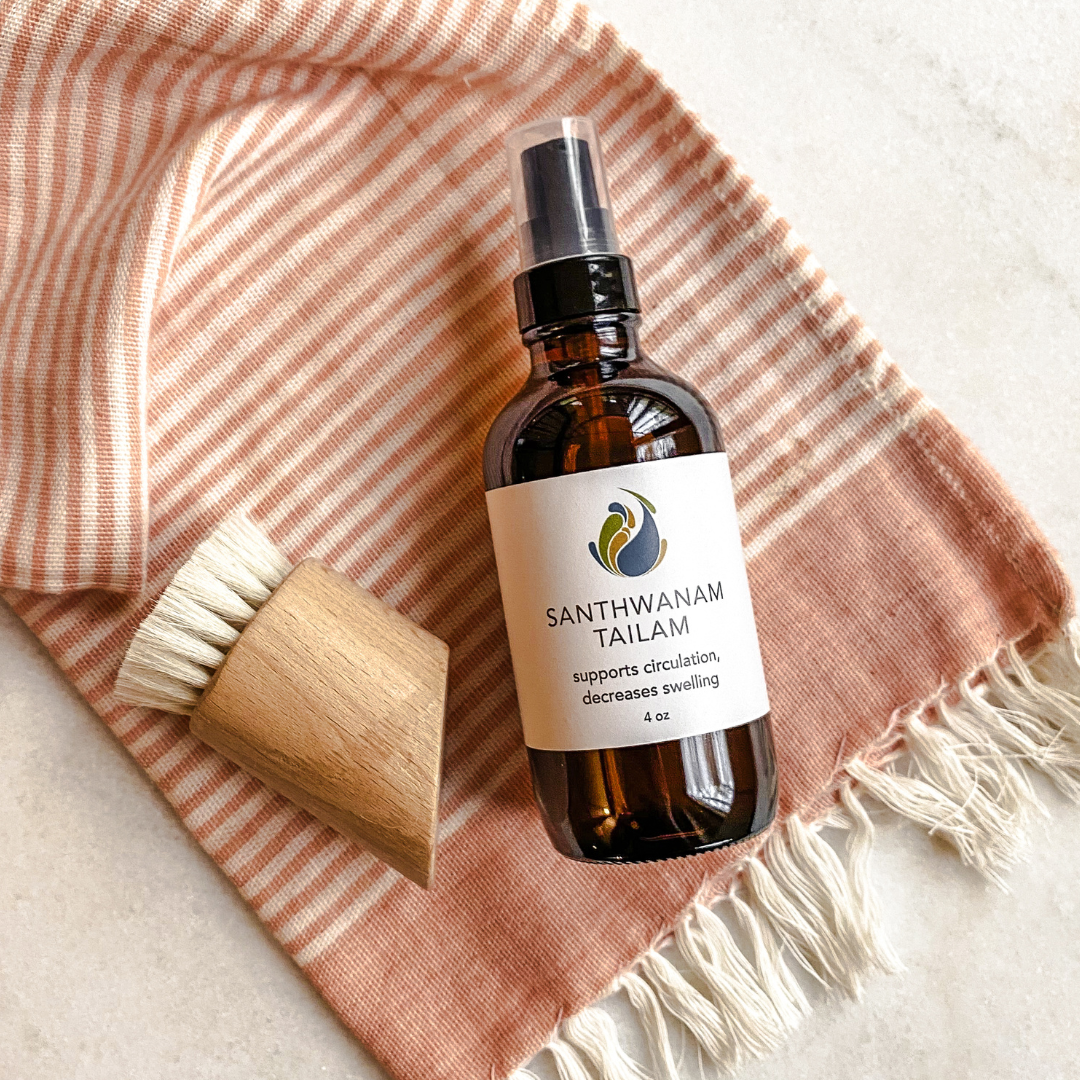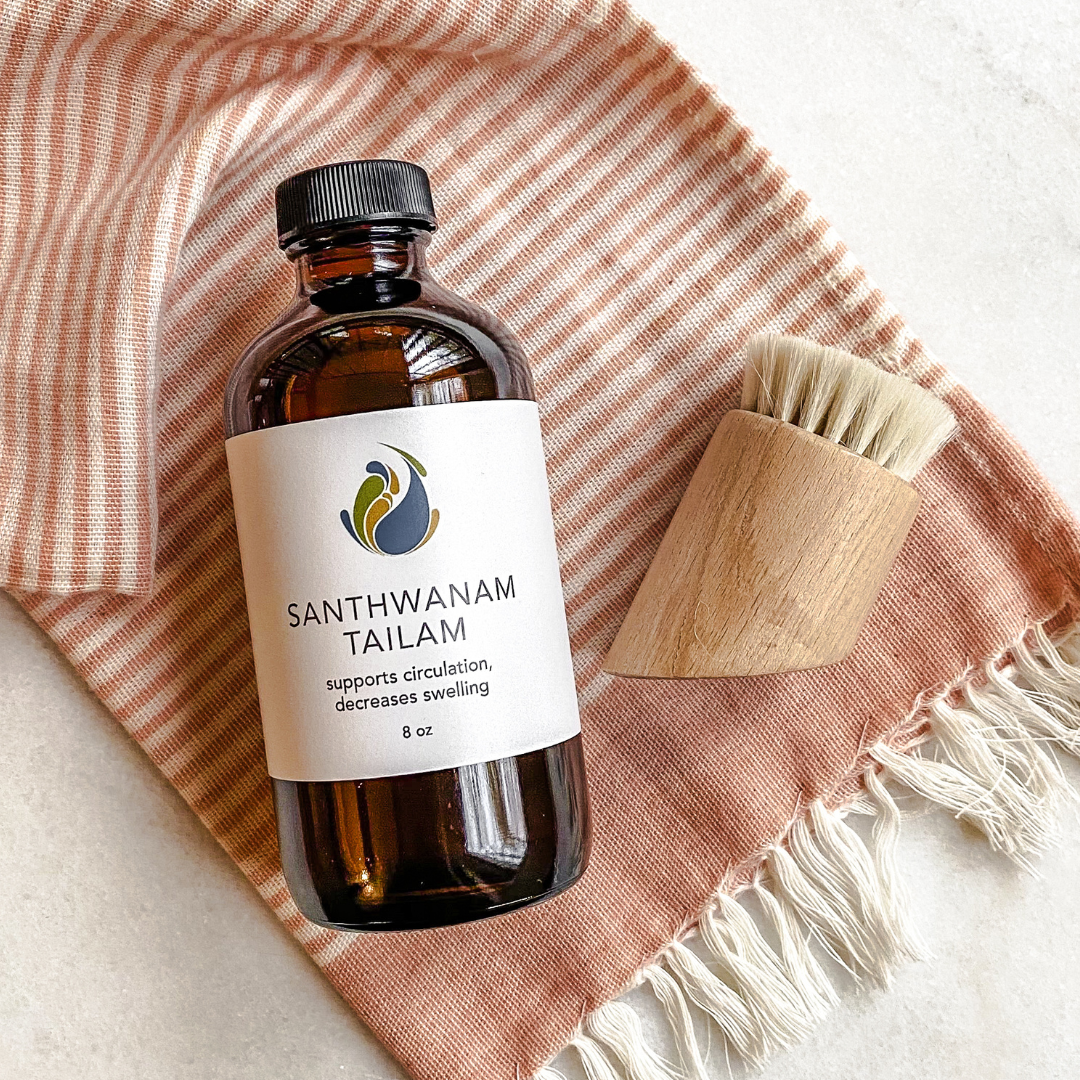what we get wrong about abhyanga
“Oil massage should be performed regularly. It destroys aging, exhaustion, and vata.
It improves vision, nourishment, longevity, sleep, health of skin,
and makes the body strong.”
what we get wrong about abhyanga
If you’ve been around Ayurveda for even a short amount of time, chances are you’ve heard of abhyanga—the Ayurvedic practice of oil massage. This application of medicated oils can be done as part of your dinacharya (daily routine) or facilitated by an Ayurvedic bodyworker as part of a therapeutic regimen.
I often find people equate abhyanga with skin moisturization—something like applying lotion. And when they feel their skin isn't too dry, the practice tends to fall away. While this understanding isn’t entirely wrong, like most things in Ayurveda, the truth runs much deeper.
snehana: more than just oil
In Sanskrit, the word snehana means oleation or lubrication. Likewise, sneha means oil—but it also means love. I’ve always appreciated that Ayurveda recognizes the same nourishing, soft, grounding, wrap-you-up qualities in oils that we associate with love.
Charaka describes snehana as:
Snehanam Sneha Vishyanda Mardava Kleda Karakam (CS Su. 22-11)
This lists to the actions that oiling bestows:
sneha (unctuousness)
vishyanda (liquefaction)
mardava (smoothness)
kleda (moistness)
Snehana is considered a principal property of the water element.
benefits of snehana:
The classical texts tell us that the benefits of snehana are far beyond moisturizing, and include:
increases digestive power
creates a feeling of lightness in the body
softens and smoothes skin
enhances circulation
supports proper elimination of wastes
relieves fatigue
improves eyesight
facilitates restful sleep
slows signs of aging
lubricates joints
The Ashtanga Hrdayam recommends oleation for: those that think too much, those that are depleted, the elderly, children, those with degeneration of the body tissues, those that are dry, those with eye issues, and those with diseases arising from Vata. In short: most of us benefit from this practice.
A few exceptions include individuals with excess Kapha or ama (undigested material/toxicity), or an acute case of indigestion of any type. In these cases, it’s important to tend to agni (digestive fire) and
working with oils in Ayurveda
Snehana can be administered in two ways:
External Oleation: where application is done with medicated lipid substances
Internal Oleation: where unctuous substances are taken internally
We’ll focus on external applications in this blog. The many forms include:
massaging gently with medicated oils (abhyanga)
systematic pouring of oils (shirodhara is an example)
oiling the head (shirobhyanga or talam)
oil pulling (kavala or gandusha)
retaining medicated ghee on the eyes (netra basti/tarpana)
filling the ears with oil (karna purna)
the doshic effects of snehana
The qualities of oil—heavy, smooth, unctuous, soft, and spreading—make it especially effective for balancing Vata.
Keep in mind:
Vata naturally increases in the fall and early winter, making this a key season for snehana.
Vata governs the last third of life, so regular abhyanga becomes increasingly important as we age.
Even if Vata isn’t dominant in your prakriti (constitution), it can arise in your vikriti (imbalance).
reframing abhyanga
If you’ve been thinking of abhyanga primarily as a skin-care ritual, it’s time to reframe. The benefits reach far deeper—into your nervous system, joints, digestion, and subtle body.
This isn’t just skincare. It’s deep, dosha-balancing, therapeutic nourishment.
If you're new to abhyanga and would like an easy how-to, you can find one here.
related products
related posts
loved what you learned? feeling inspired? share this article with someone who would benefit!
you can also share via the social icons below.



















